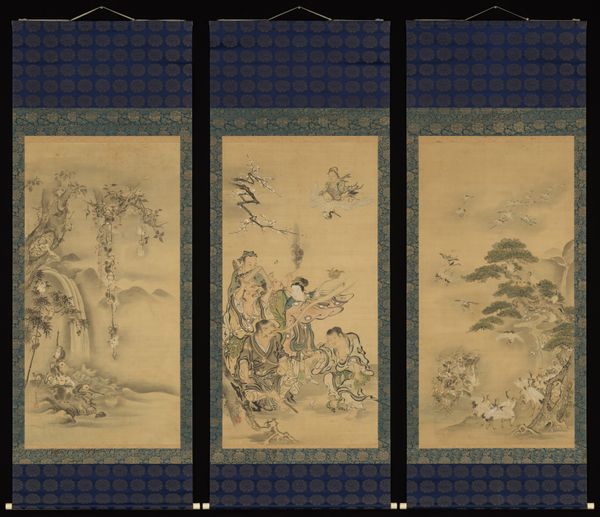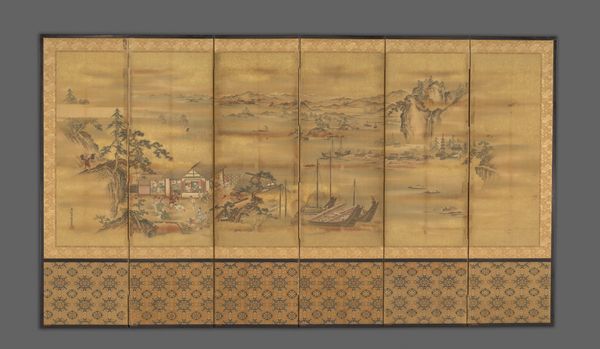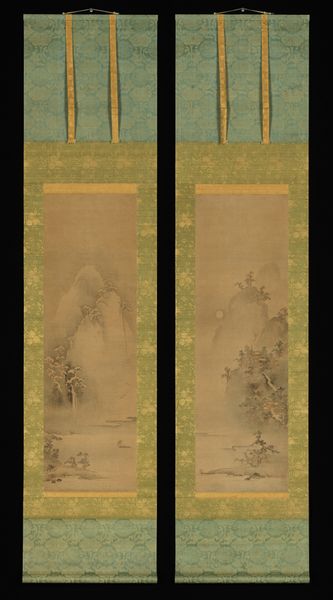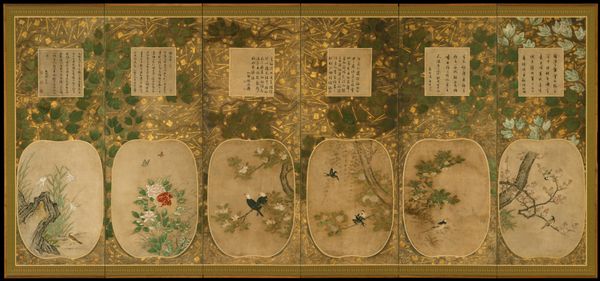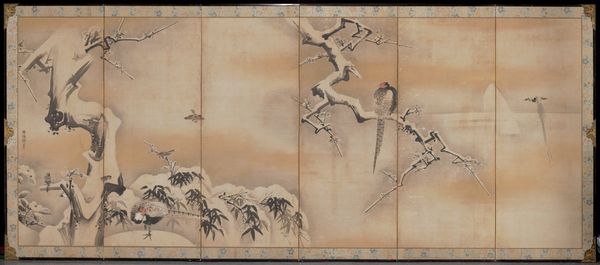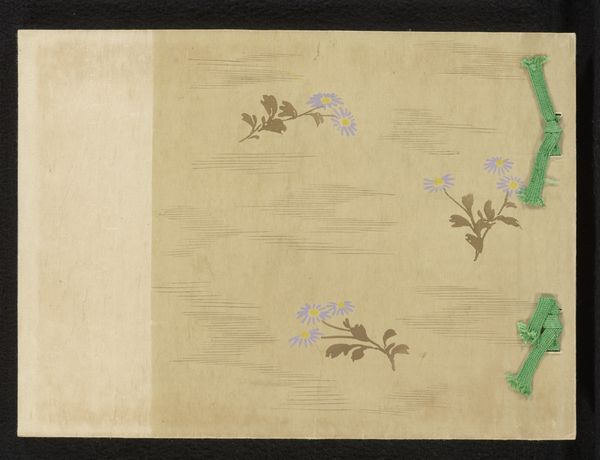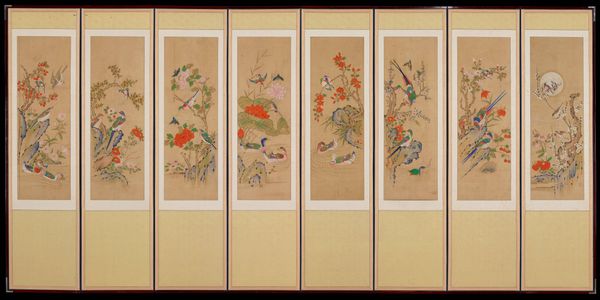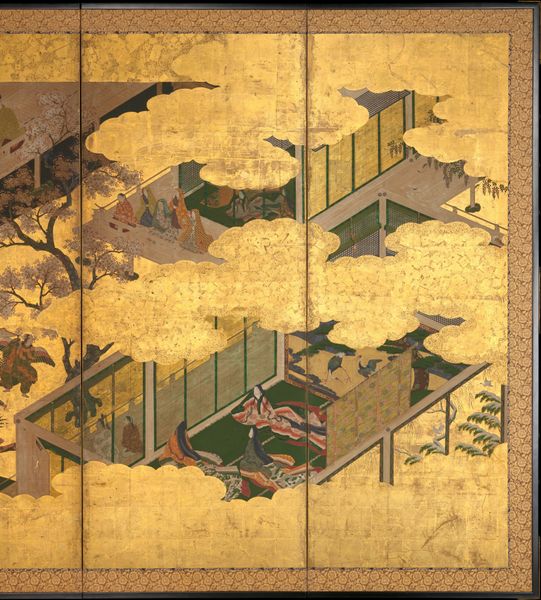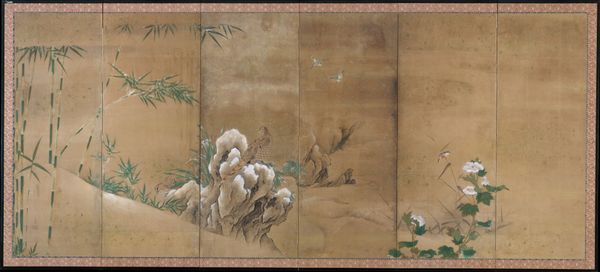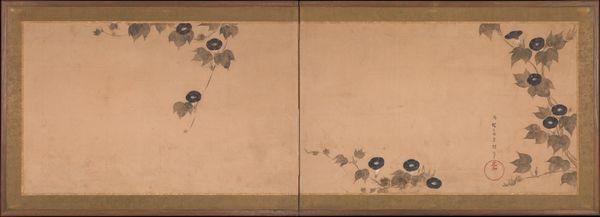
Nunobiki Waterfall, Mount Yoshino, and Tatsuta River 1709
0:00
0:00
painting, watercolor, ink
#
painting
#
asian-art
#
landscape
#
waterfall
#
river
#
flower
#
folk art
#
watercolor
#
ink
#
mountain
#
water
#
decorative-art
#
decorative art
Dimensions: Image (a): 58 9/16 × 31 1/2 in. (148.7 × 80 cm) Overall with mounting (a): 9 ft. 8 9/16 in. × 40 9/16 in. (296 × 103 cm) Overall with knobs (a): 9 ft. 8 9/16 in. × 43 1/2 in. (296 × 110.5 cm) Image (b): 58 9/16 × 31 1/2 in. (148.7 × 80 cm) Overall with mounting (b): 9 ft. 7 15/16 in. × 40 9/16 in. (294.5 × 103 cm) Overall with knobs (b): 9 ft. 7 15/16 in. × 43 9/16 in. (294.5 × 110.7 cm) Image (c): 58 3/4 × 31 1/2 in. (149.3 × 80 cm) Overall with mounting (c): 9 ft. 8 9/16 in. × 40 9/16 in. (296 × 103 cm) Overall with knobs (c): 9 ft. 8 9/16 in. × 43 5/8 in. (296 × 110.8 cm)
Copyright: Public Domain
These three hanging scrolls, painted with ink and color on silk by Kano Tsunenobu, depict the Nunobiki Waterfall, Mount Yoshino, and the Tatsuta River. Each scene is not merely a landscape, but a tableau of deeply symbolic significance within Japanese culture. The cherry blossoms of Mount Yoshino, seen to the left, symbolize the ephemeral nature of life, a theme echoed in the swiftly flowing waters of the Tatsuta River. Note how the waterfall in the central panel, a powerful image of purification and renewal, recalls similar motifs in classical antiquity, where water was seen as a life-giving force. Consider the emotional weight of these natural elements, each imbued with centuries of cultural memory. The cherry blossom, celebrated in countless poems and paintings, triggers a collective awareness of beauty and transience. Like the ancient Greeks contemplating the flowing river as a symbol of constant change, the viewer is invited into a meditation on time, existence, and the cyclical nature of life. These symbols, passed down through generations, engage us on a subconscious level. The painting's power lies not just in its aesthetic beauty, but in its ability to evoke profound emotional and psychological responses, reminding us of the continuous dance between past and present.
Comments
No comments
Be the first to comment and join the conversation on the ultimate creative platform.
